Get PeakVisor App
Sign In
Search by GPS coordinates
- Latitude
- ° ' ''
- Longitude
- ° ' ''
- Units of Length

Yes
Cancel
Share ×

Scan the QR code and open PeakVisor on your phone
❤ Wishlist ×
Choose
Delete
Forming the western border of world-famous Banff National Park and rising high above Lake Louise below, the rugged Slate Range is a chain of peaks located in the south-central part of the Canadian Rockies within the Canadian province of Alberta. The range contains 18 named mountains, the highest and most prominent of which is Mount Richardson (3,033m/9,951ft).
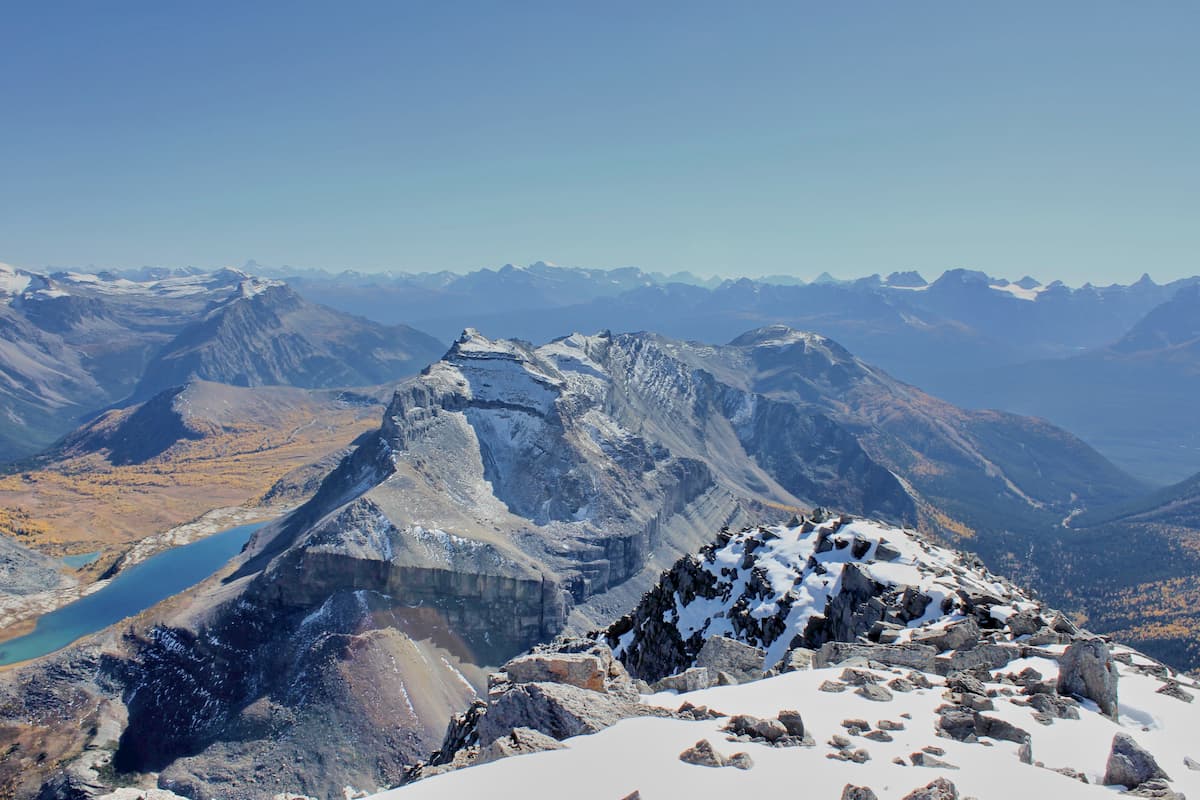
The Slate Range is a small mountain chain located along the border of Banff National Park in the Canadian province of Alberta and Yoho National Park in the province of British Columbia. Spanning a total length of about 26km (16mi) and boasting a width of just 13km (8.1mi), the Slate Range forms a tiny subsection of the massive Canadian Rockies.
Despite its small size, however, the Slate Range is home to some of the most dramatic physiographic relief in the Lake Louise region. Indeed, all of the range’s peaks are more than 2,500m (8,200ft) in height and the majority boast more than 100m (328ft) of prominence over the surrounding area.
Moreover, due to the range’s location within the heart of the Canadian Rockies, it is surrounded by other prominent ranges on all sides.
In particular, the Slate Range is situated to the west of the Sawback Range, the Bare Range, and the Drummond Group, as well as to the south of the Murchison Group. The Slate Range is also located to the north of the Bow Range and Sawback Range, as well as to the east of the Waputik Mountains, the Bow Range, and the Van Horne Range.
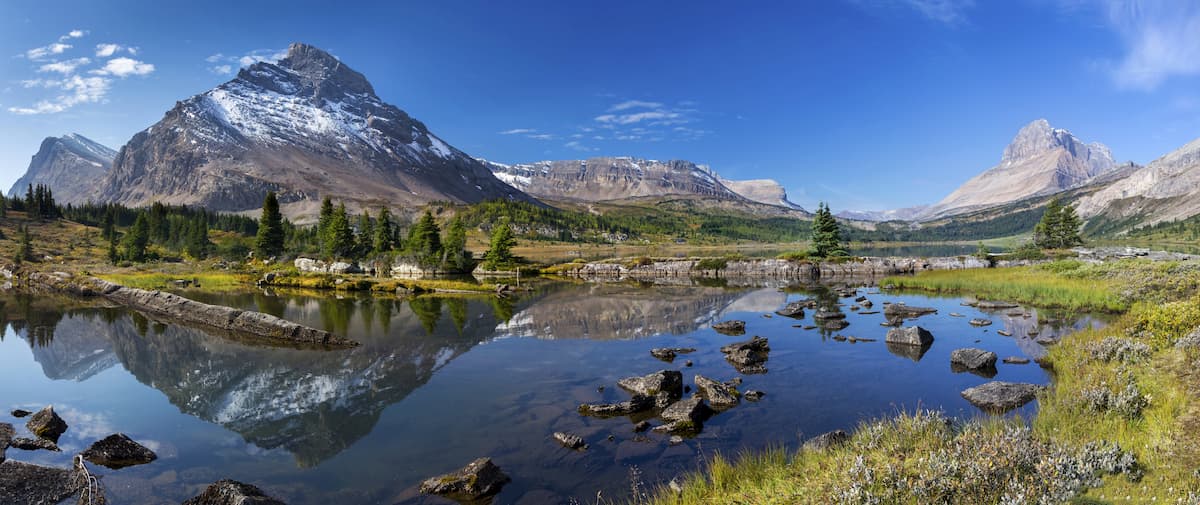
Additionally, the Slate Range is separated from these other ranges by major rivers and drainages on nearly all sides. Baker Creek forms the range’s southern and eastern boundaries, separating it from the Sawback Range. Meanwhile, the Pipestone River serves as the Slate Range’s northern boundary while the Bow Valley separates the range from Lake Louise, Yoho National Park, and the Bow Range to the west.
While the Slate Range might be fairly small, it is part of a massive collection of peaks known as the Canadian Rockies (French: Rocheuses canadiennes). Moreover, the Canadian Rockies are themselves part of an even larger system of mountain ranges known as the American Cordillera, which stretches from the Brooks Range on the north slope of the US state of Alaska, all the way south to the Andes in Chile and Argentina.
The Canadian Rockies as a whole started to take shape about 100 million years ago as the North American plate collided with a microcontinent off the west coast. This collision instigated a mountain-building event that helped create the peaks we see today.
However, as you might be able to surmise from the name, the Slate Range is comprised of large outcroppings of slate, much of which dates back to the upper Proterozoic. Other major rock layers in the range, particularly around the summits of Redoubt Mountain, Pika Peak, Ptarmigan Peak, and Mount Richardson, are comprised of sandstones, siltstones, and limestones.
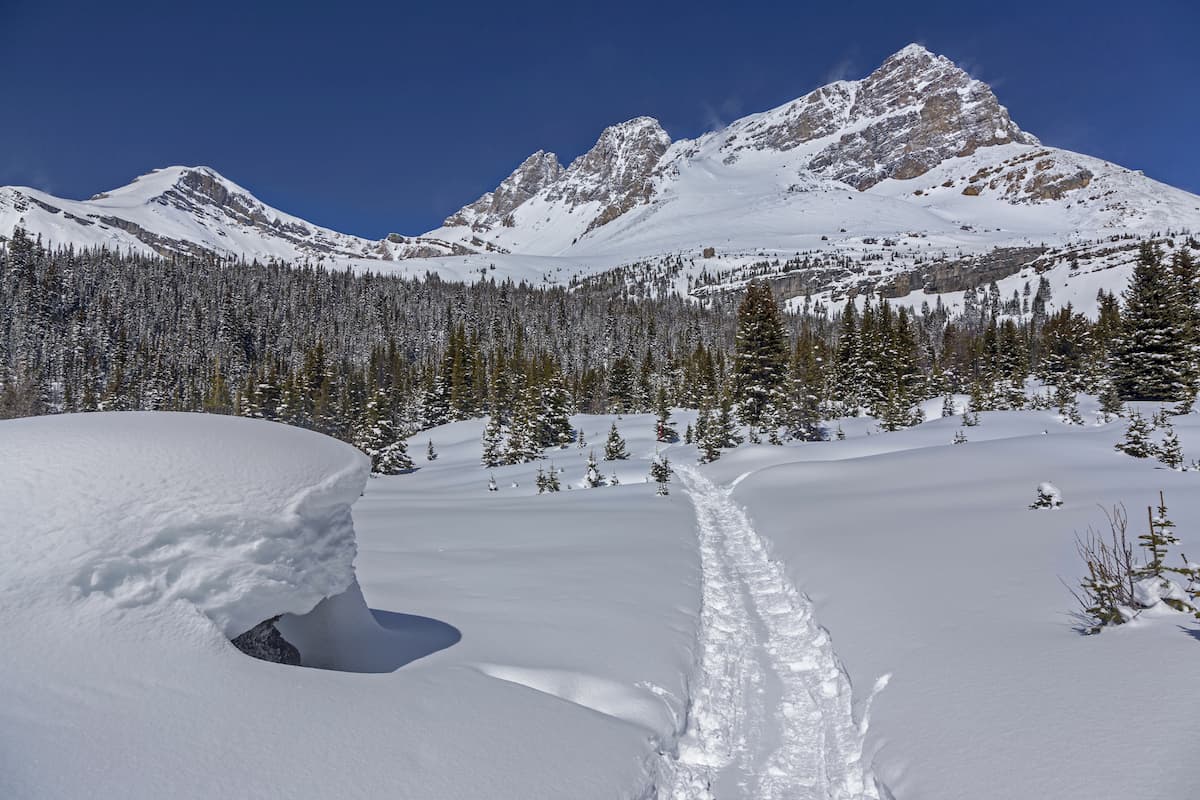
The predominantly slate layers of the Slate Range sit in direct contrast to the surrounding region, which is mostly a mix of limestone, dolomite, and quartzite sandstone in the Bow Range and Sawback Ridge, as well as unconsolidated till in the Bow Valley.
Additionally, in more recent years, the region in and around the Slate Range was heavily glaciated during the Pleistocene. Although some snowfields exist within the range today and while some glaciers can be found on neighboring mountains, such as Bonnet Peak in the Sawback Range, the evidence of this icy past is best seen in the many glacially-carved features that exist in the Slate Range today, such as cirques, tarns, and moraines.
Major peaks in the range include Mount Richardson, Ptarmigan Peak, Pika Peak, Fossil Mountain, Redoubt Mountain, Skoki Mountain, and Anthozoan Mountain.
As part of the world-famous Banff National Park, the Slate Range is home to an exceptional array of flora and fauna. In particular, the region has 3 distinct ecosystems: alpine, subalpine, and montane.
Within the forested part of the range, visitors can find stands of lodgepole pine, Douglas fir, and Douglas maple at the lowest elevations and Engelmann spruce and subalpine fir at the highest locales. Meanwhile, the area above the treeline within the range is home to a spectacular array of grasses and wildflowers, which form beautiful alpine meadows in the summer months.
Additionally, the range is the perfect habitat for a number of different mammal species, including bighorn sheep, white-tailed deer, mule deer, mountain goats, elk, moose, wolverines, mountain lions, lynx black bears, and grizzly bears.
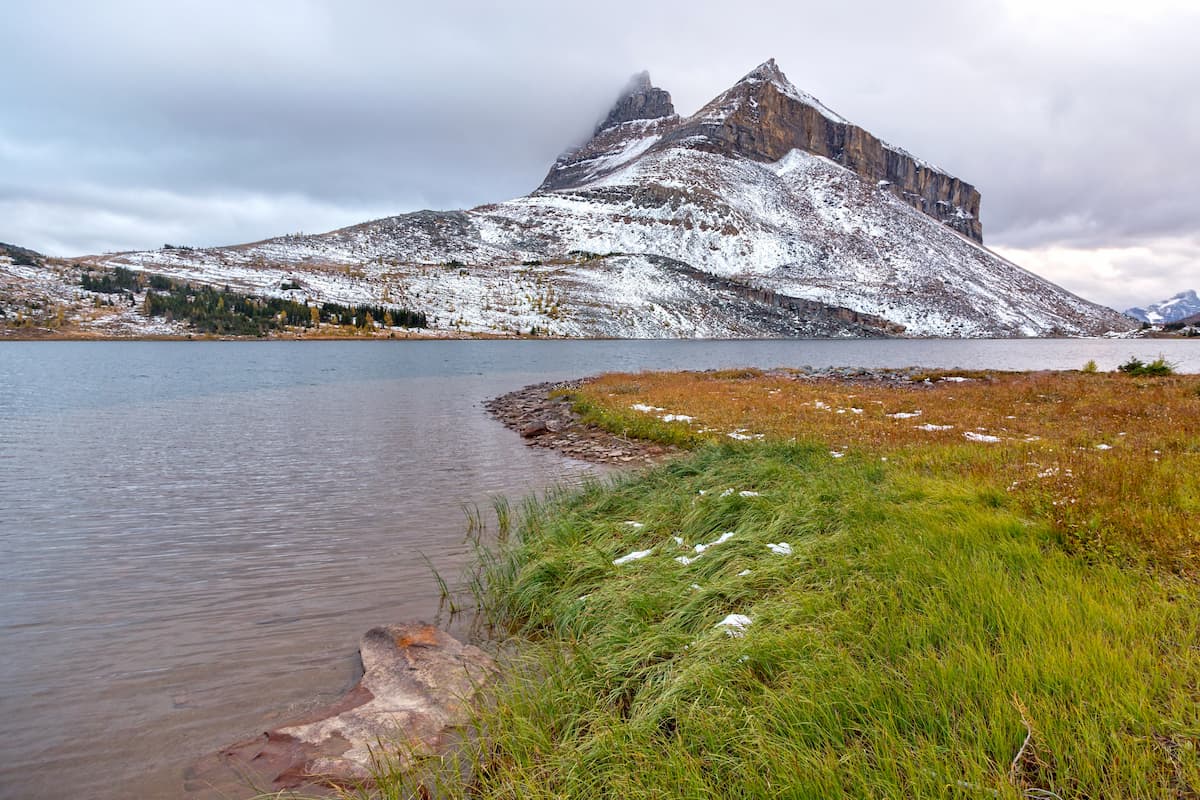
Humans have lived in and around the Slate Range since time immemorial. Indeed, the region is the part of the ancestral homelands of a number of different First Nations, particularly the Stoney Nakoda First Nation.
The first people of European descent to visit the region were likely trappers and traders from both France and Britain, who arrived in the late 18th and early 19th centuries in search of furs. During this time, the North West Company was among the most prolific, having established the Rocky Mountain House trading post near what is now Calgary in the late 18th century, in addition to a number of other trading posts in more remote places within the Canadian Rockies.
That being said, Canadians of European descent didn’t start settling the region around the Slate Range in earnest until the development of the Canadian Pacific Railway in the late 19th century. During this time, the rail companies decided to run a line through the Bow Valley, past Ho-run-num-nay, which is also known as Lake Louise in English.
Not long after, in 1887, Banff National Park was formally created, making it the first national park in Canada. While Lake Louise wasn’t added to the park until a few years later in 1892, the establishment of the park eventually led to the forced removal of the Stoney Nakoda First Nation from the area.
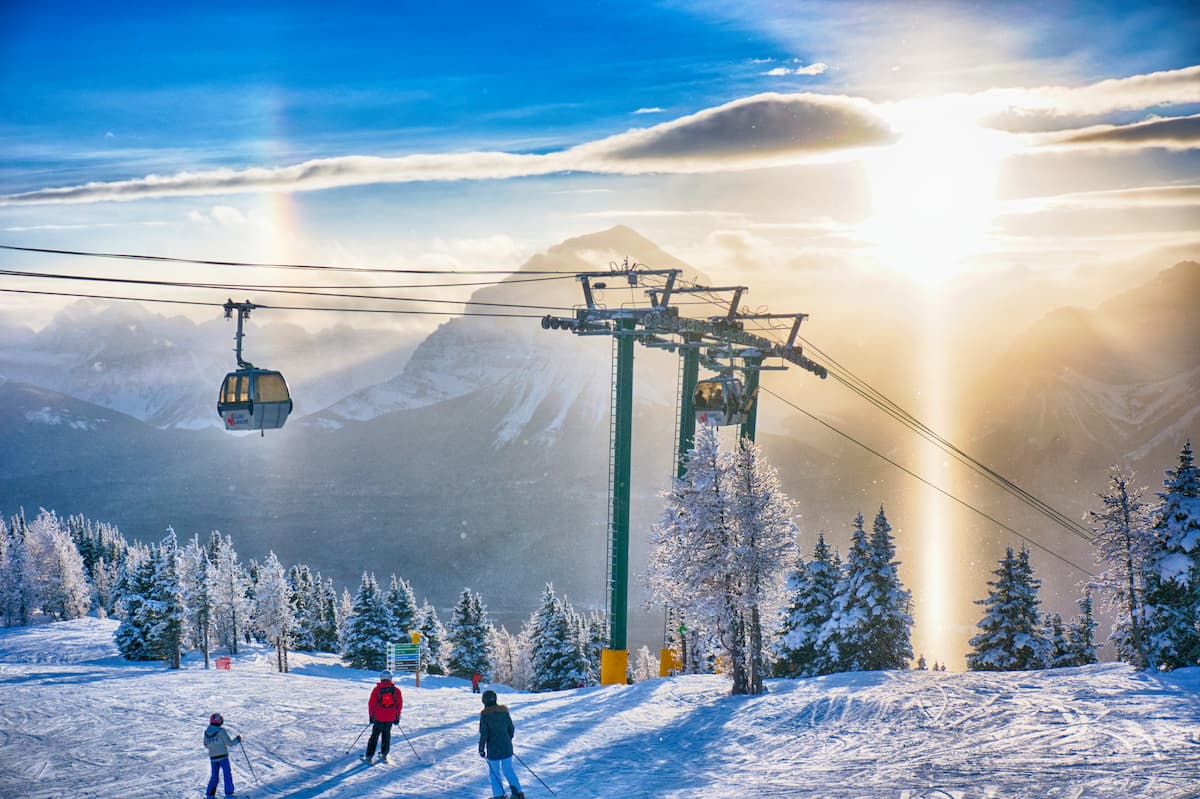
In the 1930s, organized commercial skiing came to the Slate Range with the establishment of the Skoki Ski Lodge. By the 1950s, the region had its first ski lifts and the Lake Louise Ski Resort was born. These days, the Lake Louise Ski Resort, which is located on the slopes of Lipalian Mountain and Whitehorn Mountain, is one of Canada’s premier alpine skiing destinations, making it a major center for tourism in the region.
The area in and around the Slate Range is a true hiker’s paradise, thanks to its plethora of stunning mountain vistas. That being said, much of the region’s highest slopes are trailless, so anyone wishing to make a summit attempt on any of the Slate Range’s highest peaks needs to be prepared for some scrambling.
With that in mind, here are some of the best trails and hikes to check out in the Slate Range:
A stunning 18.5 km (11.5mi) out and back hike, the Lipalian Mountain Trail offers excellent views and fantastic wildflowers in the summer months. The trail can also be used in the winter for snowshoeing, though care is needed as the hike crosses known avalanche terrain.
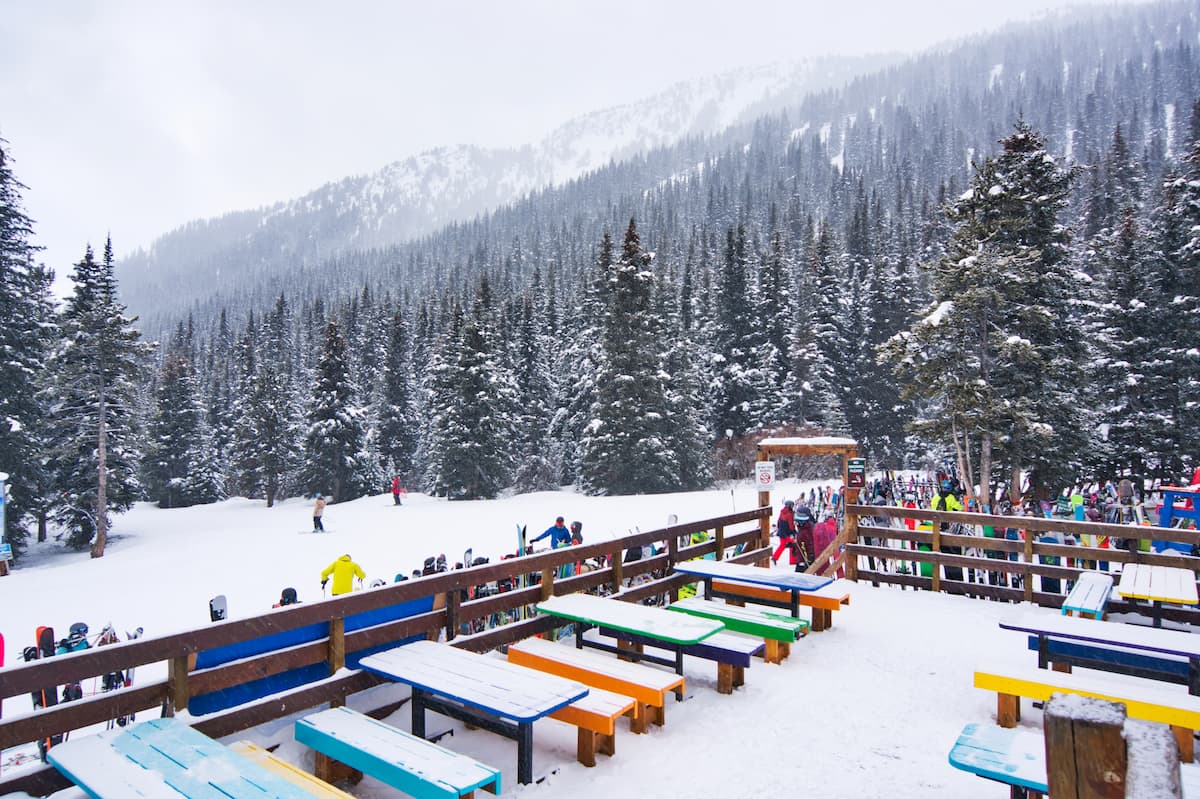
Most hikers start this trail off on the Temple Lodge access road and meander their way upward from there. Depending on how much time you have, you can choose to stop at the summit of Purple Mound or you can continue on to the top of Lipalian Mountain for sweeping views over Lake Louise, Unity Peak, Redoubt Mountain, Whitehorn Mountain, and the rest of the Slate Range.
Starting out at the Fish Creek Trailhead, the Boulder Pass Trail is one of the most popular hikes in the Slate Range. The trail is 17.2km (10.7mi) round trip to and from the pass and it offers a chance to see some beautiful alpine lakes along the way.
After departing the trailhead, the trail gradually gains elevation as you make your way up Corral Creek. Eventually, you pop out of the treeline into an alpine lake-covered wonderland between Whitehorn Mountain and Redoubt Mountain.
From here, you can relax around Hidden Lake or you can continue on for about 3.4km (2.1mi) to Baker Lake for extra views. Alternatively, if you’re feeling a bit more adventurous, you can take a side trip to the top of Deception pass, just 2.4km (1.5mi) away for even grander vistas, or you can continue on toward Ptarmigan Lake and Skoki Lakes if you’re looking for a short backpacking trip.
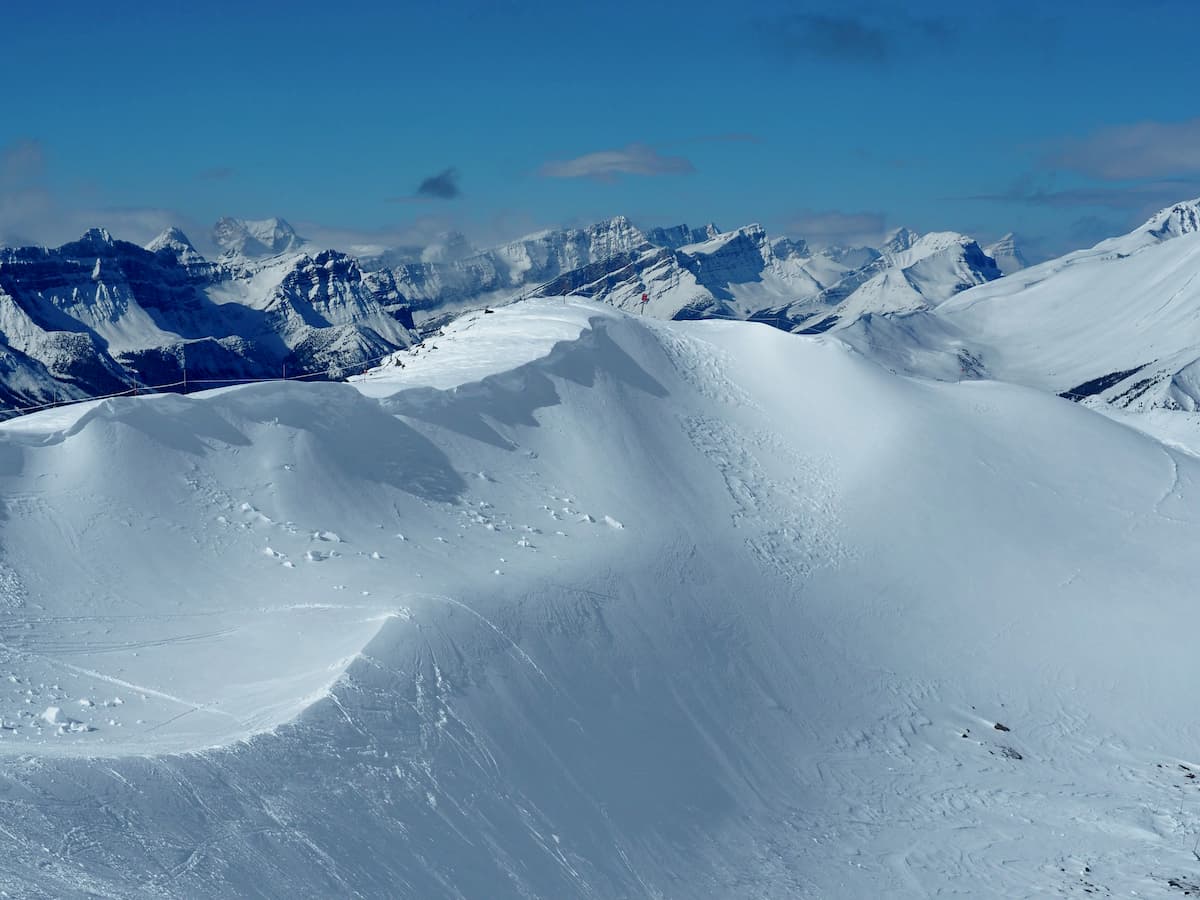
The 3 tallest peaks in the Slate Range, Mount Richardson, Pika Peak, and Ptarmigan Peak are a true paradise for alpine scrambles. Although you can summit either Mount Richardson or Ptarmigan peak on their own via the scrambles from Hidden Lake, completing this “trifecta” of peaks is a popular option for experienced hikers.
However, do keep in mind that the terrain here is rough and that a decent amount of scrambling and off-trail travel is required to make it to the summit of these peaks. So, anyone looking to venture to the tallest peaks in the Slate Range should be confident in their navigation skills and they come prepared with appropriate gear for the ascent.
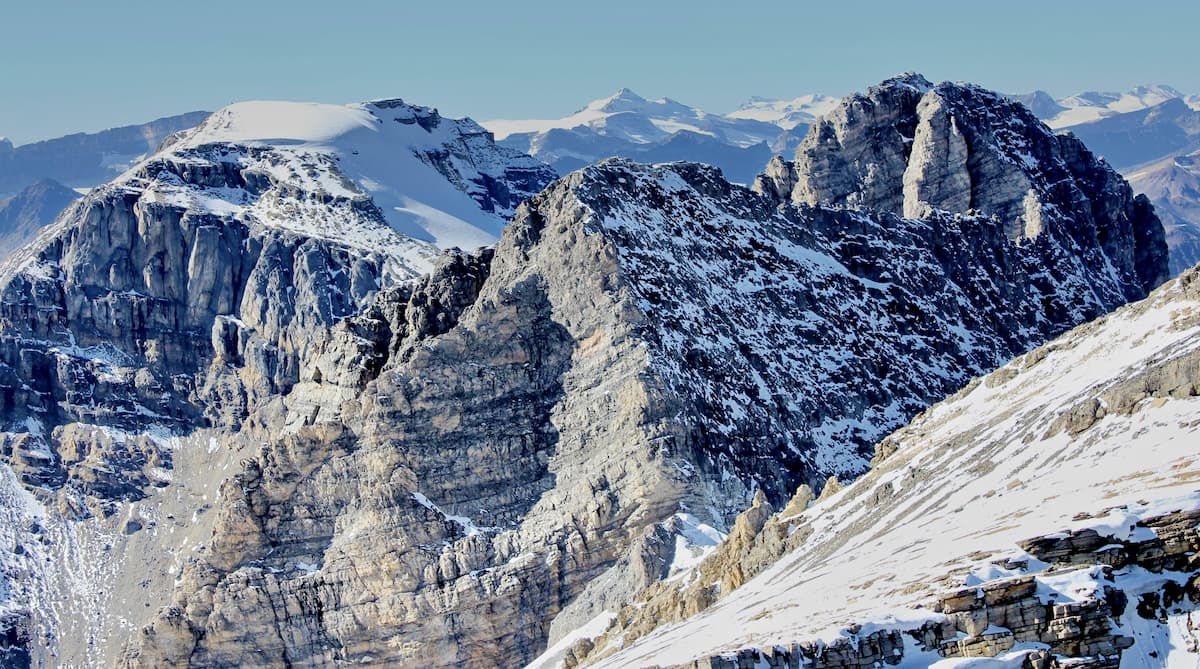
Although the Slate Range is home to some truly stunning alpine terrain, it’s also one of the most accessible ranges in the region. Here are some of the best places to stay if you’re looking to visit in the Slate Range:
The closest town to the Slate Range, Lake Louise is a small hamlet located on the western slopes of the range. While the town has only about 700 year-round residents, the Lake Louise Ski Resort brings in tens of thousands of visitors to the region each year, making it a great place to stay for any mountain enthusiast.
Visitors to Lake Louise can choose from any one of a number of hotels, including the famous Fairmont Chateau Lake Louise, which is among the oldest in the region. If you’re visiting during the winter months, Lake Louise is also an excellent home base for any ski-based adventures.

Situated just a short drive to the south of the Slate Range, the town of Banff is home to about 8,000 residents and it’s one of the most popular tourist destinations in all of Canada. The town is located along the Trans-Canada Highway, making it easy to access by road from nearby Calgary.
Famous for its outdoor recreation opportunities, Banff provides great access to Banff National Park and the surrounding area. It’s also home to the world-famous Banff Centre for Arts and Creativity, which hosts the Banff Mountain Film Festival each year.
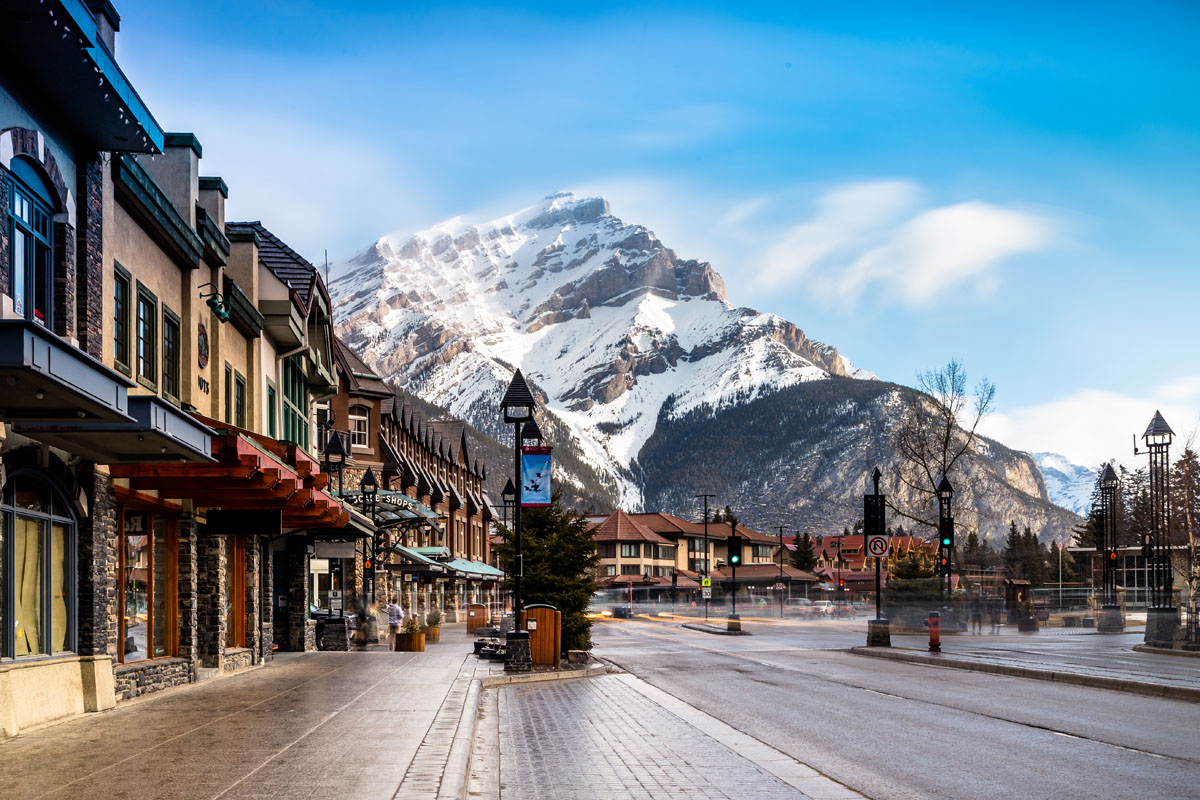
Home to around 1.2 million residents, Calgary is the fourth largest city in Canada. It is located just a short drive to the east of the Canadian Rockies, and it’s home to one of the largest airports in the region, so it’s an excellent place to fly into if you’re traveling from further afield.
Calgary also offers excellent road access to many of the region’s major parks, including Banff, Jasper, Yoho, and Kootenay national parks.
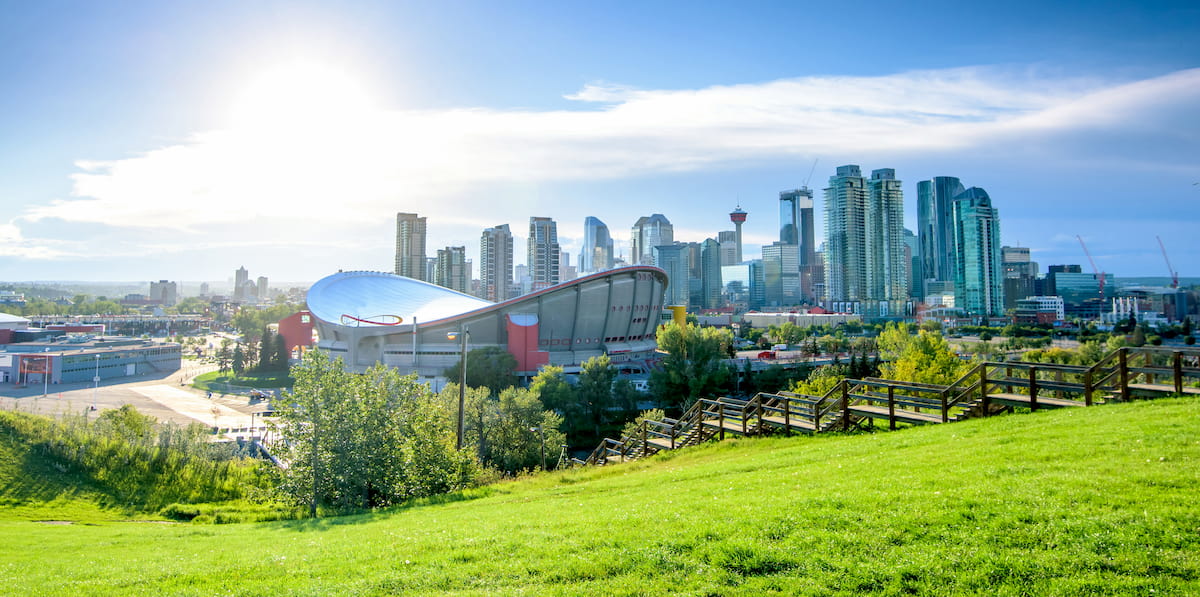
Explore Slate Range (Canadian Rockies) with the PeakVisor 3D Map and identify its summits.








